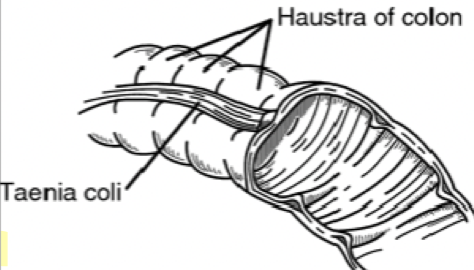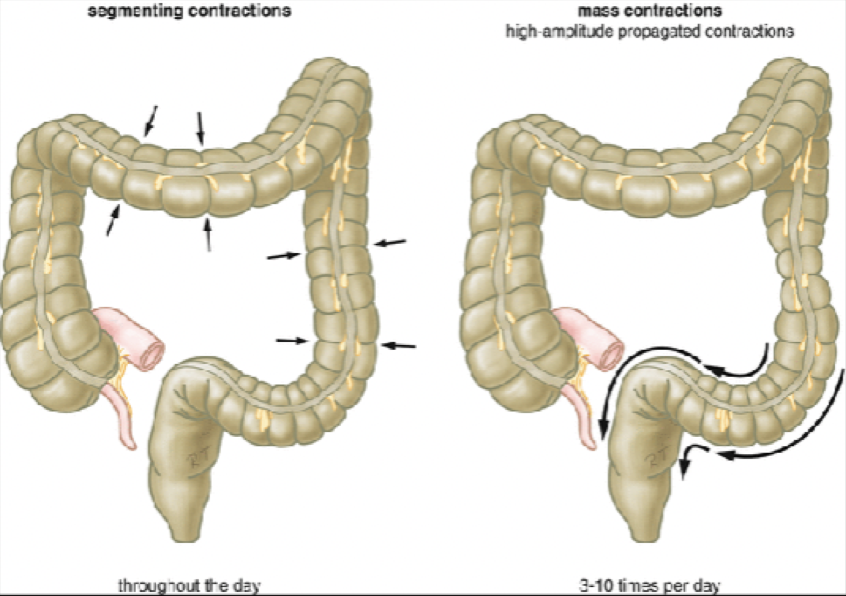5. Large intestine
1/8
There's no tags or description
Looks like no tags are added yet.
Name | Mastery | Learn | Test | Matching | Spaced |
|---|
No study sessions yet.
9 Terms
Large intestine functions
Absorption (water and electrolytes) to form feces
Storage fecal matter until expulsion
Bacterial digestion (fermentation) forms gases and beneficial compounds
What are the names of the 2 movements of colon
Mixing contractions and propulsive movements
Mixing contractions
Haustrations, modified segmentation
Colon segmented into pouches called haustras which contract and relax to mix contents
This helps improve absorptions

Propulsive movements
Mass movements, modified peristalsis
Push fecal matter towards rectum

Regulation of movements (enteric NS + parasympathetic control)
ENS - controls digestive functions, regulates contractions of colon and coordinates movement
PNS - stim mass movements by activation of ENS, vagus and pelvic nerves increase motility, most active after eating
Regulation of movements (reflexes)
Gastrocolic - stomach fills with food, stimulates mass movement (expel old food to make space for new food)
Duodenocolic - food enters duodenum, stimulates mass movement (clear existing waste)
Defacation reflex
When rectum fills → stretch receptors signals spinal cord
Defacation reflex - involuntary control
Automatic (autonomous NS)
Internal anal sphincter relaxes - urge to defacate becomes noticeable
Increased peristalsis - sigmoid colon + rectum contract more forcefully, push feces to anus
Defacation reflex - voluntary control
Somatic NS - conscious control via pudendal nerve
External anal sphincter (choose to contract or relax)
Valsalva maneuver (straining to poop) - contraction abdominal muscles + diaphragm